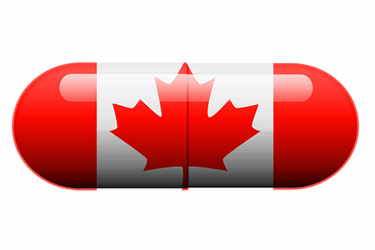Are You Prepared For Canada's Upcoming Vanessa's Law Regulations?

By Yazan Saleh, Decision Resources Group
When the 15-year-old daughter of former member of parliament (MP) Terence Young passed away in 2000 due to a heart attack caused by a prescription drug she was taking for stomach pain, Health Canada deemed the product unsafe as the manufacturer promptly pulled it from the market. But that was not the end of the story for patients or for the life science industry. That incident, coupled with advocacy efforts by MP Young, fueled the most fundamental reform to Canada’s Food and Drugs Act in over 50 years.
On December 6, 2013, Young introduced Bill C-17, also known as Protecting Canadians from Unsafe Drugs Act and Vanessa’s Law (in honor of his late daughter), to the Canadian Parliament. The bill received royal assent (i.e., became law) almost a year later (November 6, 2014), setting up market authorization holders for more stringent pre- and post-marketing drug monitoring in Canada. Most provisions of the act are expected to go into effect in late 2016 or early 2017.
Although natural health products as defined by Health Canada are excluded, Vanessa’s Law will apply to almost all other therapeutic products including prescription drugs, over-the-counter drugs, vaccines, gene therapies, cells, tissues and organs, and medical devices. The legislation described in the act will impose tougher penalties for contravening the act, as well as grant the minister of health new powers over market authorization (MA) holders regarding recall, testing, and labelling of their products as described below.
New Recall Powers
Under the new regulations, the minister of health can order a product to be recalled off the market immediately if it is deemed to present a serious or imminent risk to human health. While this power came into effect when the bill received royal assent, Health Canada is expected to develop and release an internal policy that would guide the process of such recalls. Interestingly, the text of Vanessa’s Law does not seem to contain any clear transparency requirements regarding the new powers granted to the minister and Health Canada. In other words, Health Canada is not compelled to release details documenting the reasoning behind a recall order for a particular drug. If the impending policy does indeed lack such transparency, then MA holders could become more hesitant to enter the Canadian market, as they are forced to deal with a new layer of regulatory uncertainty.
Increased Reporting Requirements
Vanessa’s Law places a greater burden on MA holders by expanding the scope of information they must report to the minister of health. For example, MA holders are required to report any changes made to the label and package of their therapeutic product, in order to reduce the risk of injury to human health. The minister can also order a direct modification on the label/package if the change is deemed necessary to prevent injury as a result of use. Manufacturers can also be ordered to conduct additional post-approval assessments, tests, or studies if those are deemed to be necessary to evaluate risk. Additional reporting requirements include information pertaining to the status and safety of the therapeutic product in other countries; MA holders will be required to report the risks communicated, labelling changes, and any recalls for their products that have taken place outside of Canada. In addition, any reassessments, suspensions, or revocations that occur to the marketing of the product in any other country must be reported.
Controversy
Perhaps the most contentious part of the amendment is the power given to the minister of health to require provision of information regardless of its sensitivity and/or confidentiality. If the minister believes that certain information is necessary to determine whether a therapeutic product poses a risk to human health, then he or she can order any person in possession of that information to provide it. Additionally, the minister can disclose such confidential business information to an “appropriate party” without consent or even notifying the person whose business the information relates to. An “appropriate party” can be any part of the government, a person from whom the minister is seeking advice, or a person who carries out functions related to protection of human health.
The release of confidential business information (CBI) was received negatively by the life science industry, as such information could contain business data whose release could result in financial loss. MA holders have been concerned that the release of CBI could potentially end up in the hands of competitors, providing them with an unfair market advantage. However, Health Canada’s policy for release of CBI will help allay some of these fears. In a draft guidance document released in March 2016 (Disclosure of Confidential Business Information under Paragraph 21.1(3)(c) of the Food and Drugs Act), Health Canada describes a thorough review process for release of confidential information that will ensure the requested information is only used for noncommercial purposes. It is expected that a finalized version of this policy be released within the next year.
Implementation Timeline
When the bill became law at the end of 2014, some of its provisions came into effect immediately. Those include the minister of health’s power to require provision of additional information, disclose confidential business information, order labelling changes, and order recalls. Other provisions of the act will come into force in the upcoming year as Health Canada establishes supporting legislation for the new powers vested to it by Vanessa’s Act. In fact, in June 2016, Health Canada published a notice of intent document that describes the development of new regulations in a phased approach. In brief, phase 1 will focus on prescribing the conditions under which the minister can order additional tests to be conducted by the manufacturer, expanding the reporting requirements to global information, and requiring the reporting of labelling changes. Phase 2 will involve amendments to require notification and expanded reporting on voluntary recall decisions. Health Canada is expected to release the corresponding regulations between Q4 2016 and Q1 2017.
Preparing for Implementation
Life science companies must take immediate action to ensure compliance with the new laws, or they will be at a disadvantage. First, they must ensure that their current process for reporting to regulatory authorities is updated to meet the new Canadian requirements. For example, companies should use internal reporting systems that collect relevant regulatory information from all their international divisions concerning products marketed in Canada. This will facilitate compliance with the expanded reporting requirements and ensure that Health Canada is updated not only on the status of their therapeutic product(s) in Canada, but also on its status globally as noted above.
Companies should also ensure that their recall protocols are amended to meet the new reporting requirements to Health Canada. This involves meeting new, tighter deadlines and submitting the corresponding documents (risk evaluation, written report, etc.) following voluntary recall decisions.
Compliance with Vanessa’s Law will be critical for maintaining business success in Canada, particularly due to harsher penalties associated with the aforementioned amendments. Any person or company that fails to comply with any of the provisions of the act will be guilty and liable to significantly higher penalties under the new amendments. On conviction by indictment, any person or company will be liable for a fine of up to C$5 million (US$3.8 million) per day of contravention — compared to the previous C$5,000 fine — and/or up to two years in jail. On a first offense summary conviction, any person or company will be liable for a fine of up to C$250,000 (US$189,544) and/or 6 months of jail time. This will be increased to C$500,000 (US$377,088) fine and/or up to 18 months in jail for any subsequent offences. These penalties can be increased even further at the discretion of the court if contravening of the act is deemed to be knowingly or recklessly.
As a result of these harsh penalties, life science companies doing business in Canada should ensure that their compliance programs are reinforced with a compliance officer trained in the specifics of Vanessa’s Law. Companies should also ensure that all compliance efforts are properly documented so that due diligence can be argued to mitigate the harsh penalties if an issue of noncompliance happens to arise.
Conclusion
The overall cost of compliance and doing business in Canada will likely increase as a result of Vanessa’s Law. Life science companies must be proactive against noncompliance, which can result in market recall and harsh financial loss. The increase in regulatory oversight as a result of the new amendments could result in a dip in the number of therapeutic products and medical devices entering the Canadian market. While the law will definitely present a major challenge to the industry, proactive companies can potentially find opportunities for growth as they backfill some of the market segments left untapped by noncompliant competitors.
 About the Author:
About the Author:
Yazan Saleh is an associate analyst on the Global Market Access Insights team at Decision Resources Group (DRG). He is responsible for monitoring the evolving healthcare and pharmaceutical landscapes with a focus on Australia, Canada, Saudi Arabia, and South Africa. He is primarily involved in analyzing and reporting on the impending regulatory and market changes that impact access to these regions through DRG’s Global Market Access Solution (GMAS) platform. Yazan holds a B.Sc. from the University of Toronto.
